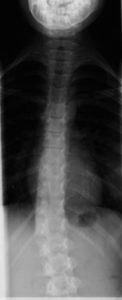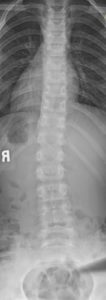If you are reading this, there’s a good chance you or your child has scoliosis. I’m going to guess you have a pretty good sense of what scoliosis is. The most frustrating part for you might be trying to figure out what to do about it. Your MD may have said, “Come back in 4-6 months and we will take more x-rays. We will wait and see if it gets bad enough to do surgery”. Maybe they suggested a brace (see previous blog: Not All Braces are Created Equally), but chances are they didn’t recommend specifically designed, asymmetric Physical Therapy (PT) exercises. These exercises focus on muscle balance while helping you or your child learn to stand, sit and move more symmetrically.
Despite extensive study, the medical community has yet to determine the exact cause(s) of scoliosis or the exact factors that contribute to curve progression, cessation, and regression. Because of this, we cannot easily predict your (or your child’s) outcome. In some cases, scoliotic curves can be slowed, reduced or in a few cases eliminated as demonstrated in a few of our cases below. Unfortunately, some curves progress in size despite our efforts. In our clinic, we have seen scoliotic curves improve with programs focusing on corrective exercise and attention to everyday positioning.
Here are some images of young girls who came to me with small curves. These girls were given a specially designed exercise program based on their specific curve patterns, on the science of the Postural Restoration Institute®, and the teachings of the Schroth Methodology. It is encouraging to see that in these cases curves regressed enough to have “the diagnosis of scoliosis removed from their chart!” as one happy parent reported. A measurement of <10 degrees of a curve is not considered to be scoliosis.
These few cases do not offer a guarantee of curve pattern resolution for everyone. But they do offer hope that early, specialized therapeutic intervention offers a chance for improvement. The program can also be empowering to the individual as something to actively do and control, rather than the “wait and see” approach. From my experience intervening early is best, especially with young people. Further, if a curve does progress to the need for surgery, it seems likely that improved muscle balance and symmetrical movement ability would enhance a surgical correction and post surgery rehabilitation.









